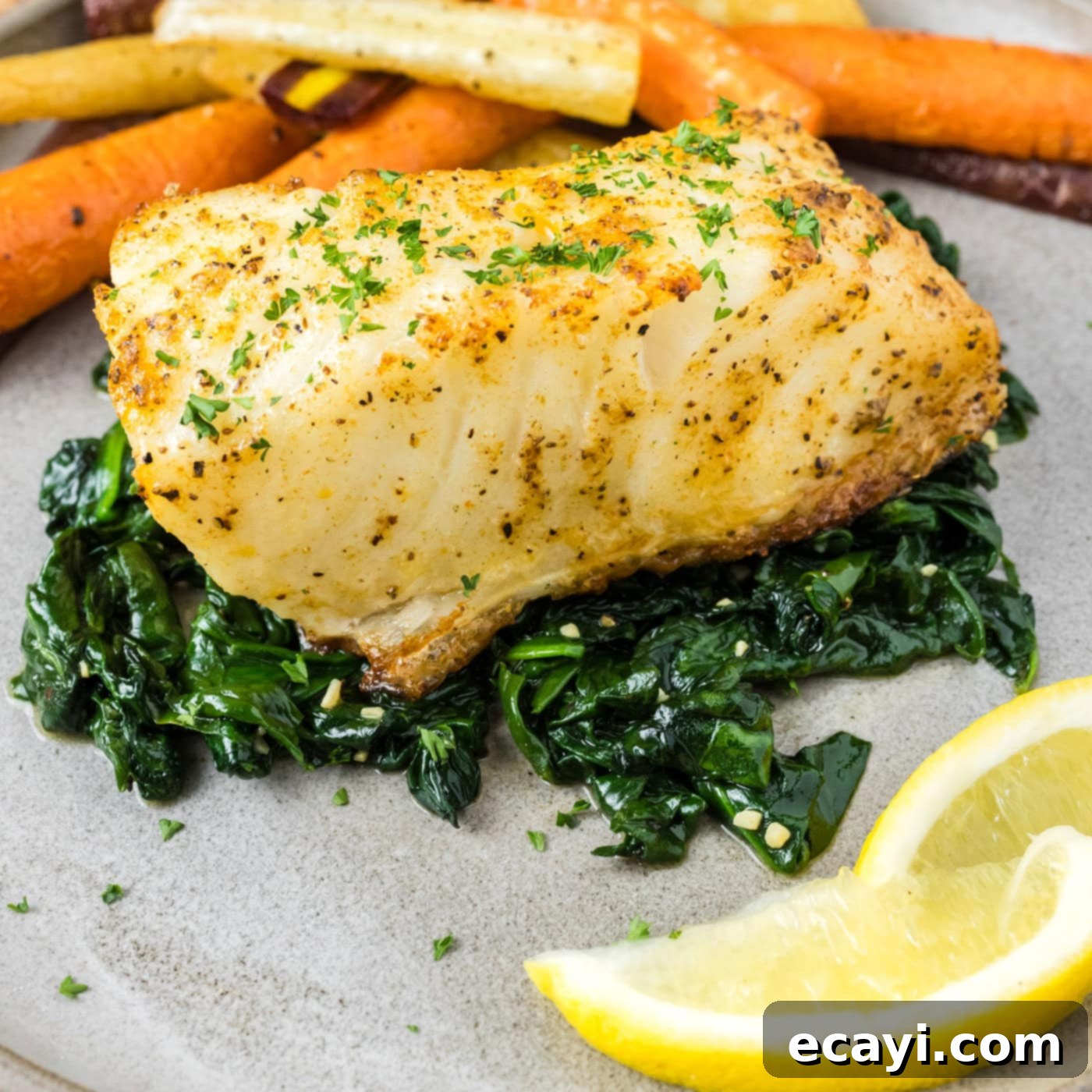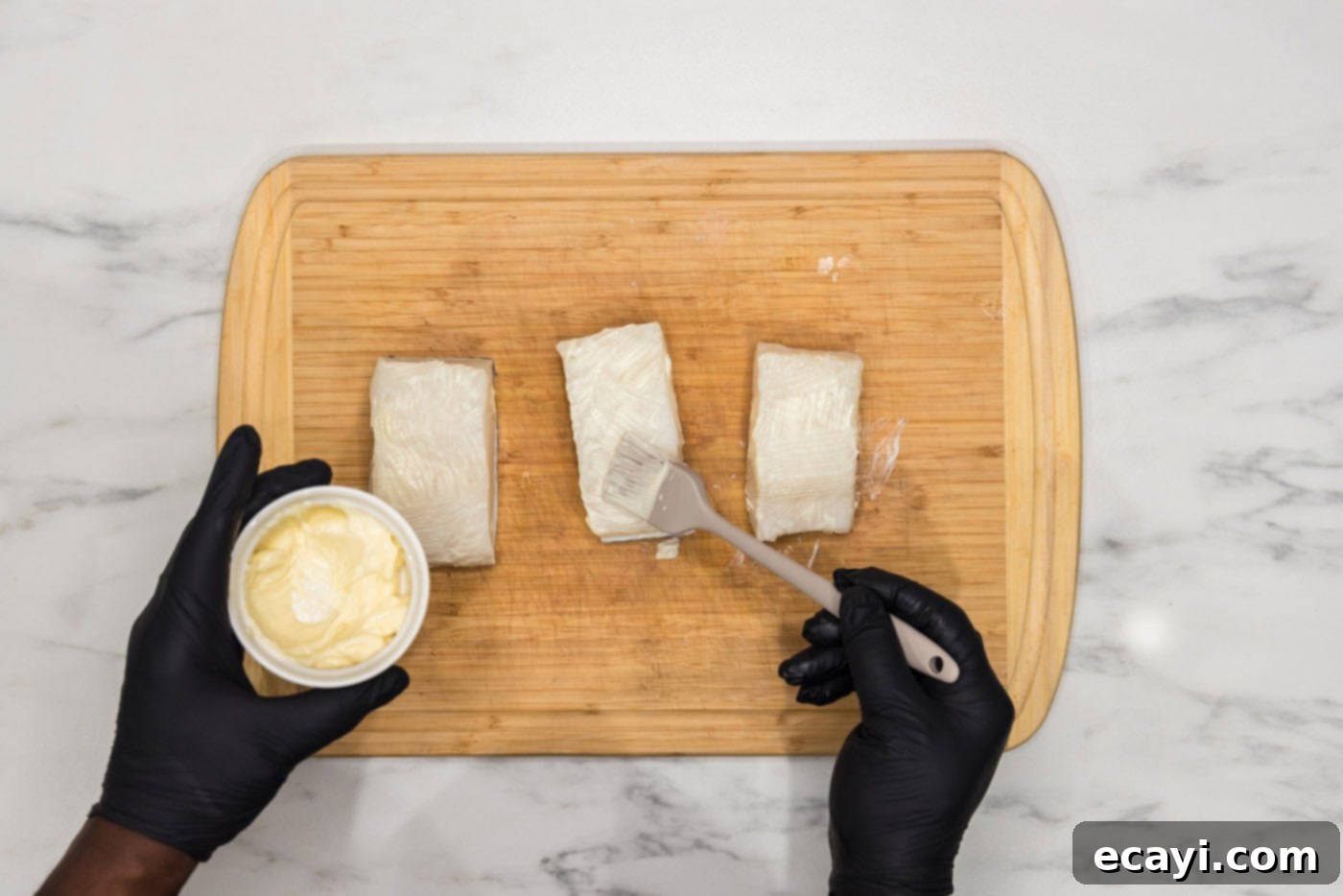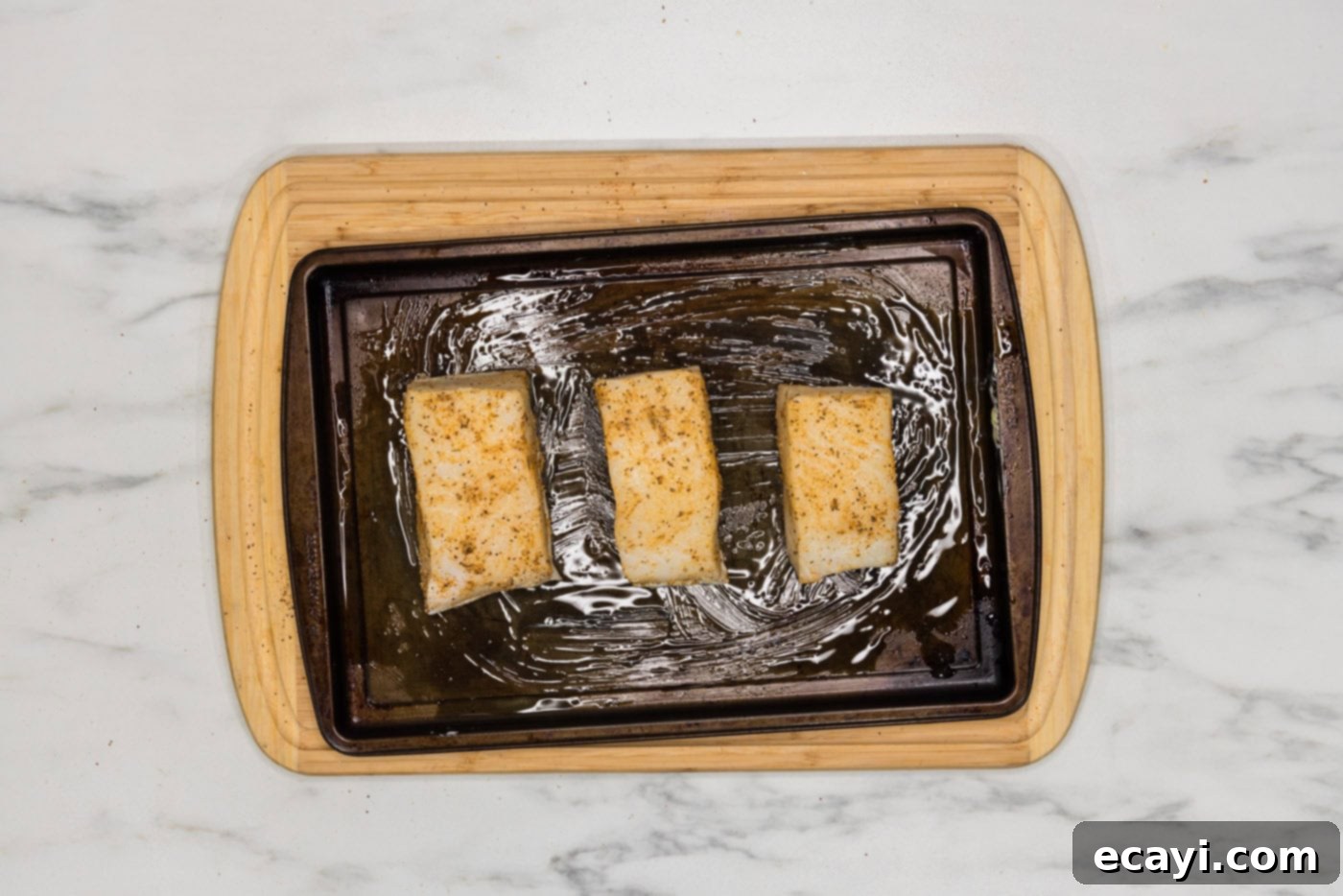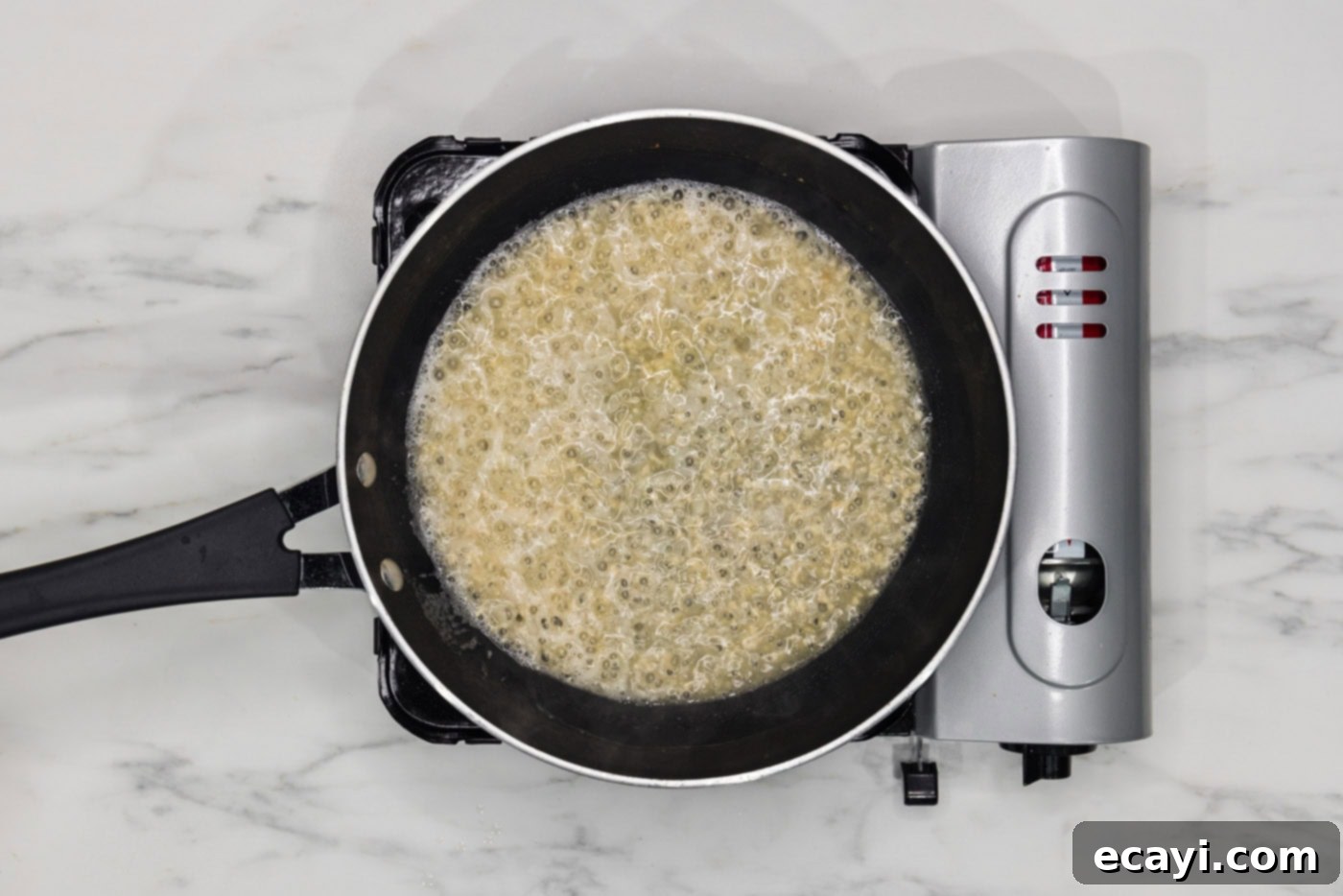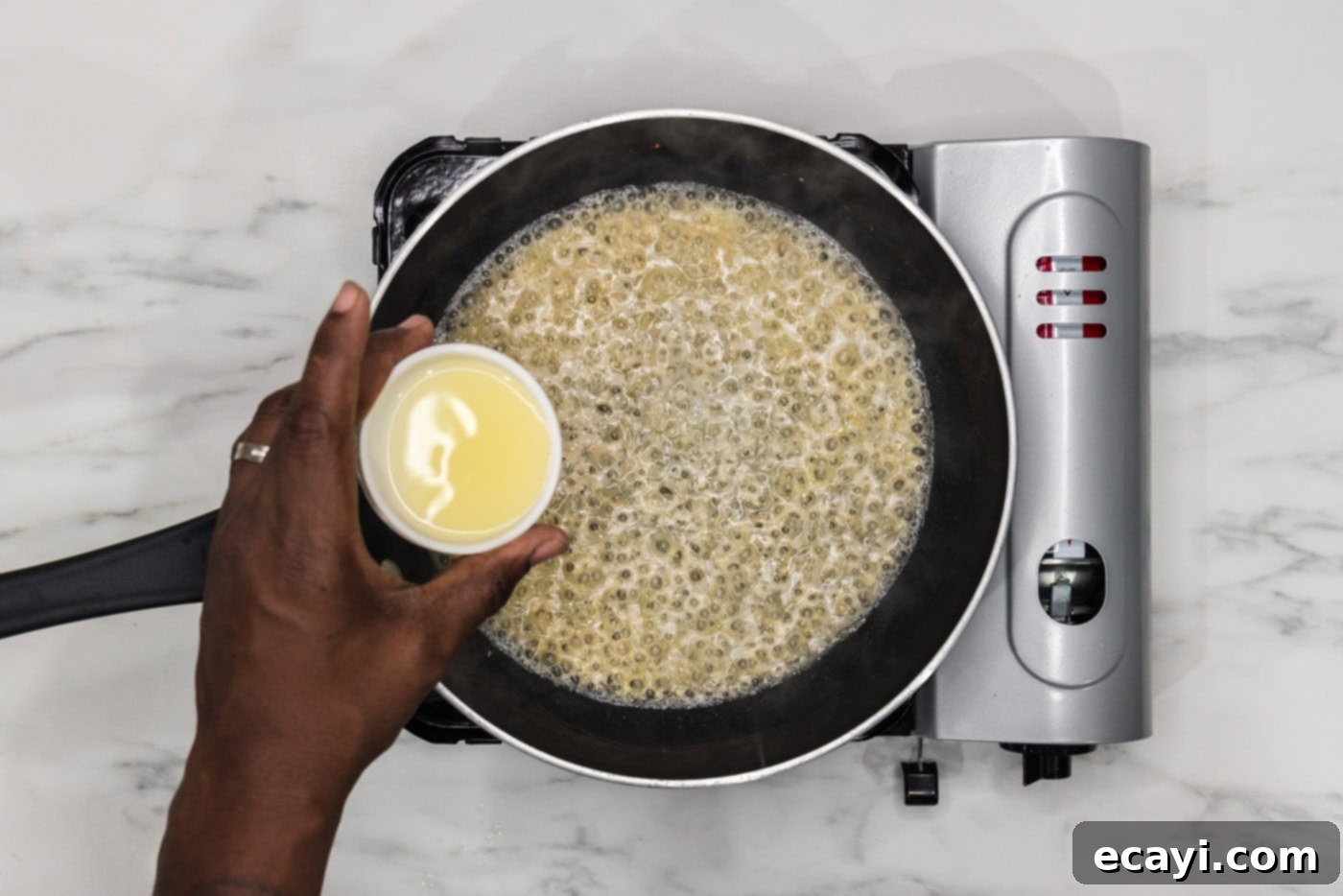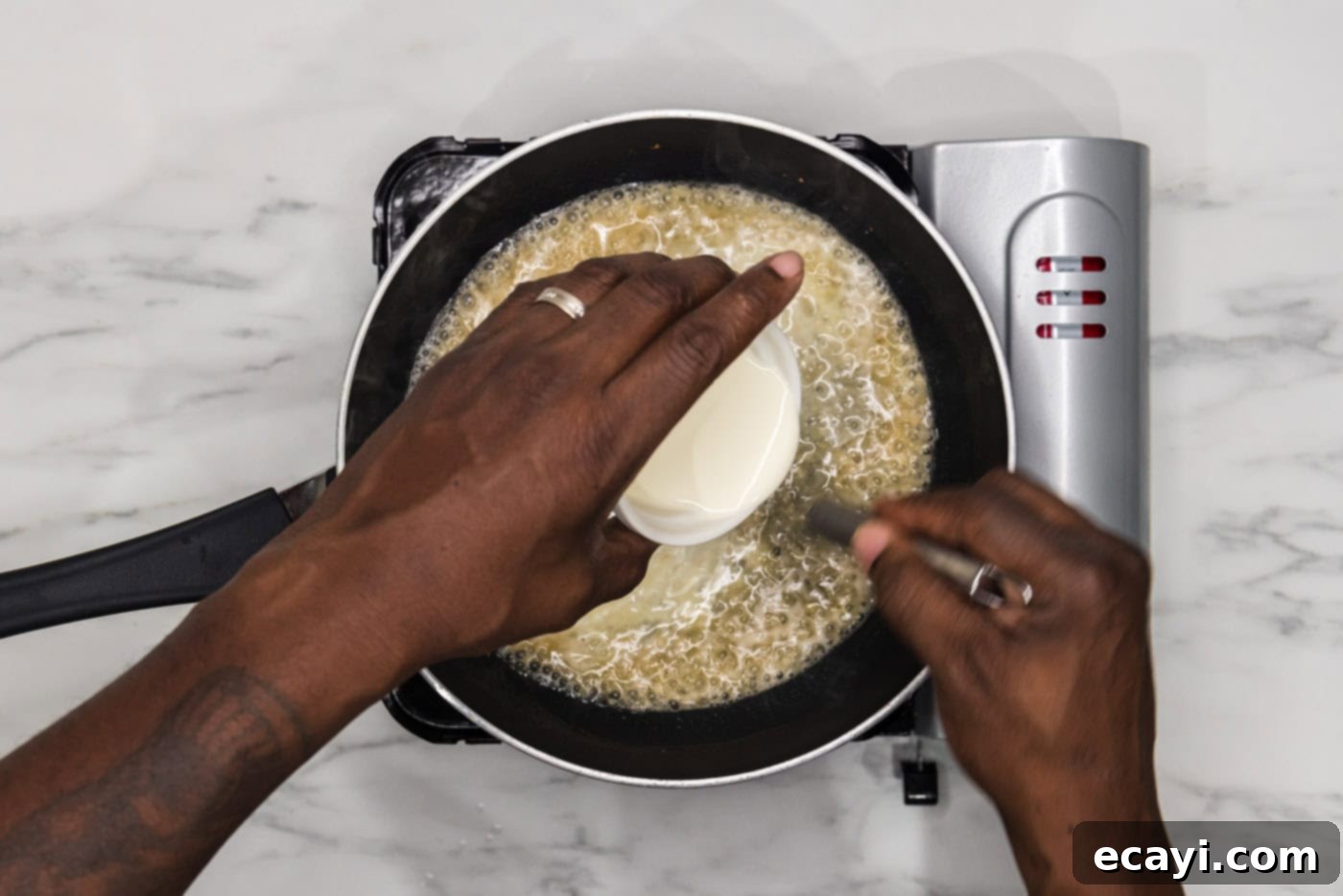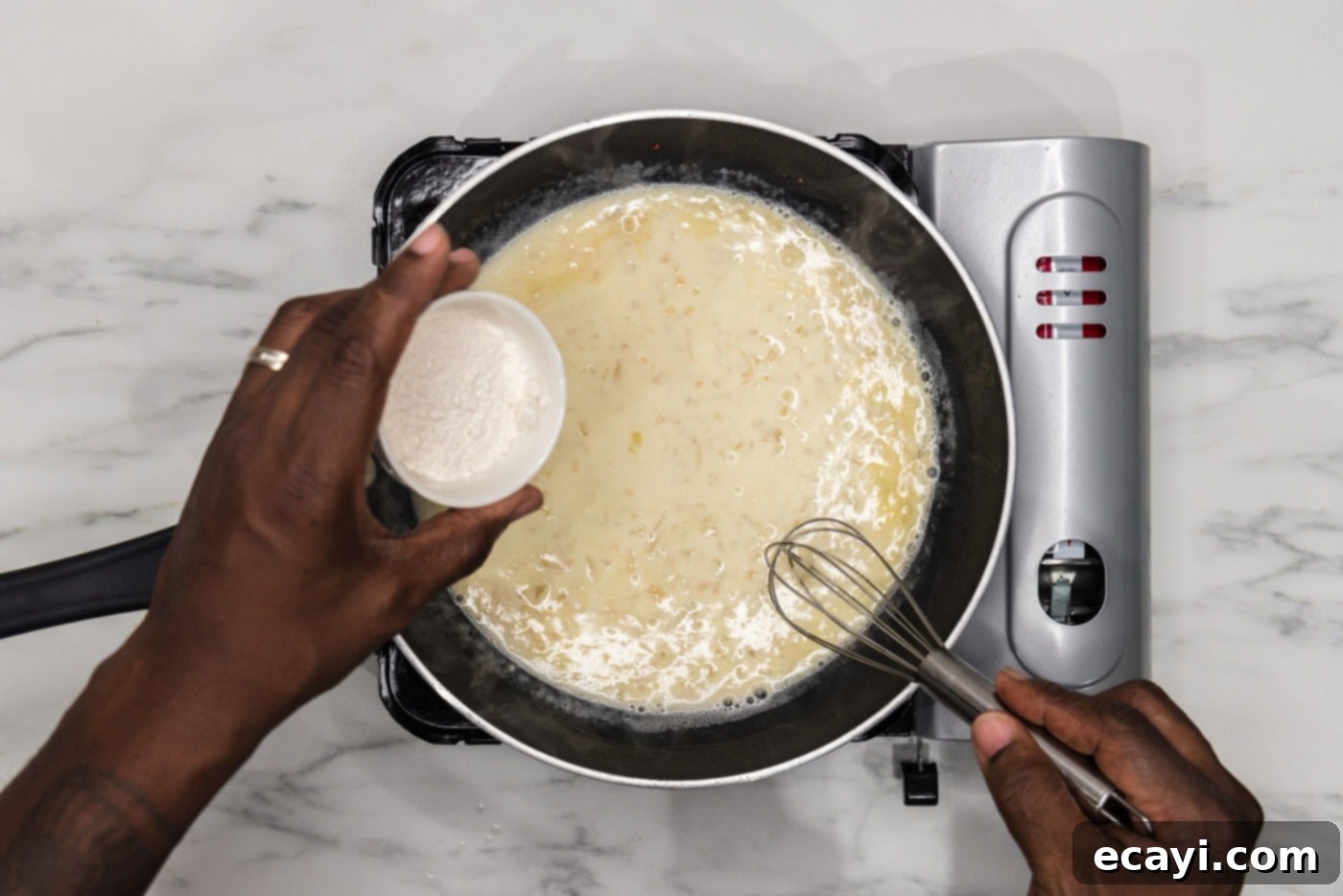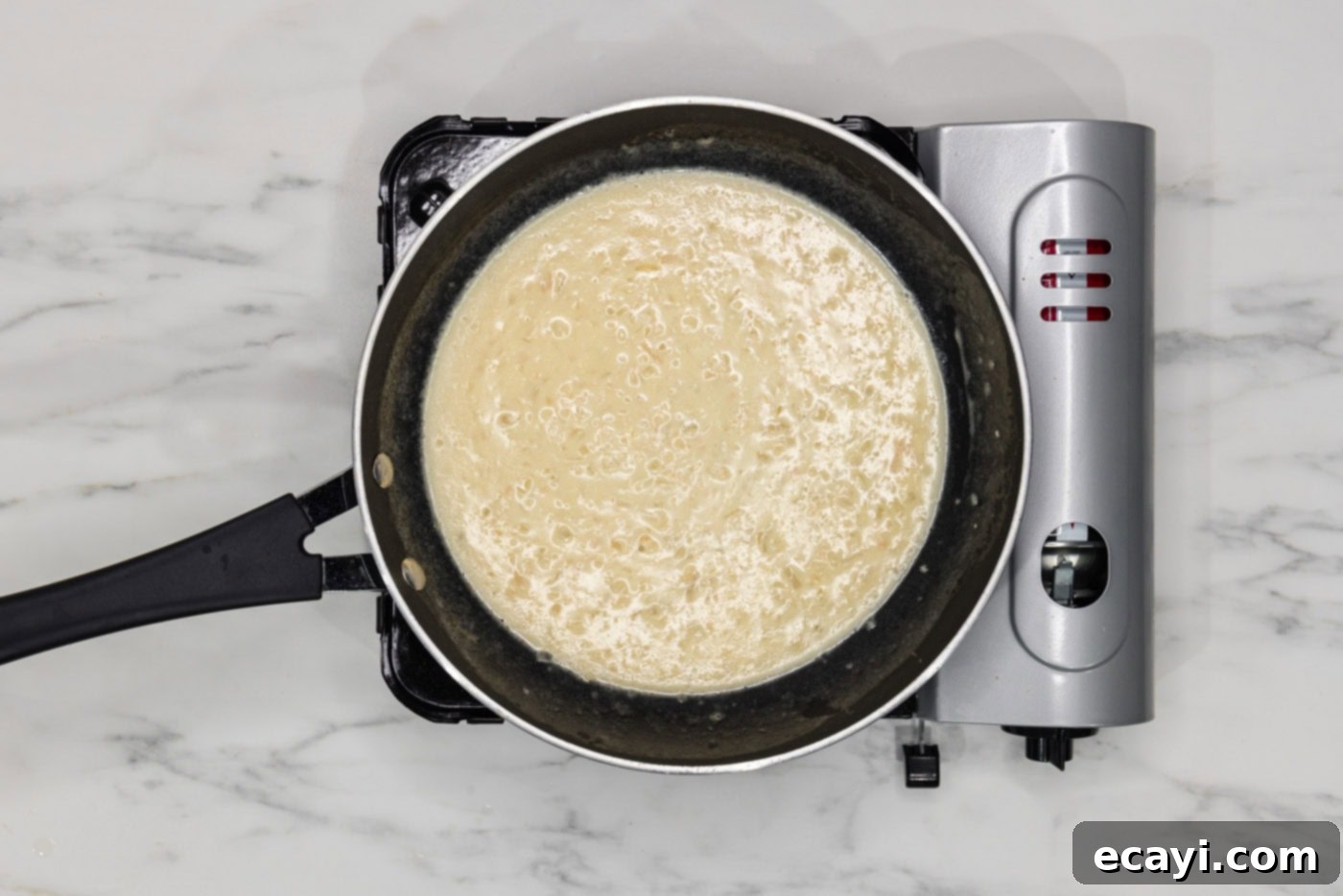Melt-in-Your-Mouth Baked Chilean Sea Bass with Velvety Beurre Blanc Sauce: An Easy 30-Minute Gourmet Meal
Prepare to be amazed by this incredibly simple yet sophisticated baked Chilean sea bass recipe. Each delicate, flaky bite melts effortlessly in your mouth, delivering a truly luxurious dining experience. What makes this dish even more remarkable is that it comes together in under 30 minutes, featuring a special, tangy, and velvety beurre blanc sauce that perfectly complements the fish’s rich flavor. This recipe proves that you don’t need hours in the kitchen to create an impressive, restaurant-quality meal.
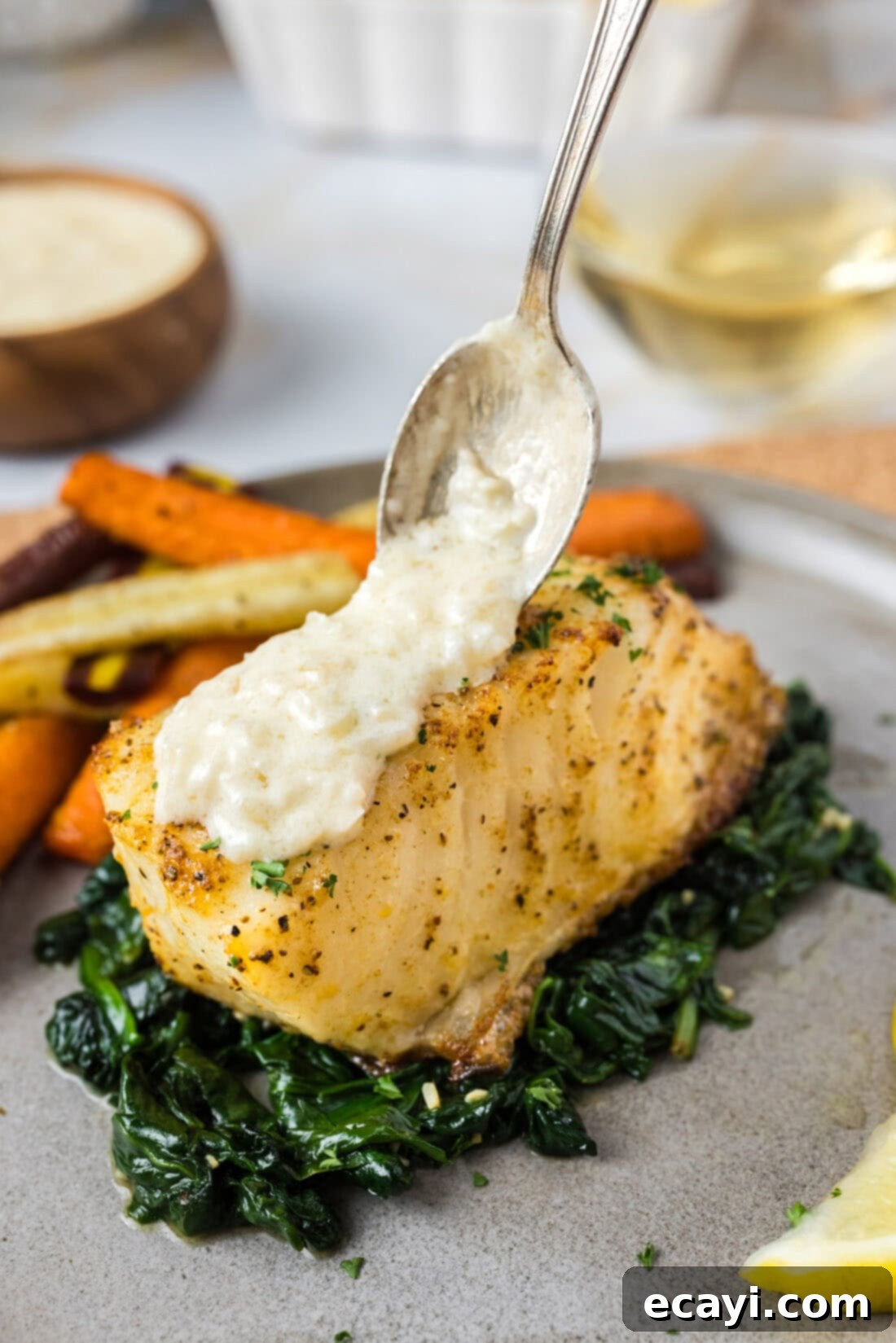
Why This Easy Baked Chilean Sea Bass Recipe Is a Must-Try
If you’re new to cooking fish, or simply looking for a foolproof recipe that consistently delivers spectacular results, this baked Chilean sea bass is an absolute revelation. Its inherent qualities make it incredibly forgiving and delicious. The beauty of this recipe lies in its simplicity; by keeping the seasonings straightforward, we allow the natural, exquisite flavor of the fish to truly shine. This delicate approach ensures that the accompanying homemade beurre blanc sauce enhances, rather than overwhelms, the star of the dish.
Chilean sea bass, often referred to as Patagonian toothfish in the scientific community, is renowned for its unique culinary attributes. Despite its common market name, it’s not actually a member of the bass family, but rather a white-fleshed fish celebrated for its distinctively buttery, flaky, and exceptionally delicate texture. Its mild flavor profile makes it incredibly versatile and a favorite among seafood enthusiasts. This fish truly “speaks for itself” with its inherent richness. However, when paired with our tangy, rich, and velvety beurre blanc, the dish is elevated to an entirely new level of gourmet perfection. It’s an indulgence we wholeheartedly recommend for those special occasions or when you simply want to treat yourself to something extraordinary.
Baking is arguably the best cooking method for Chilean sea bass as it gently coaxes out the fish’s natural oils, keeping it moist and preventing it from drying out. This technique preserves its tender texture and allows for minimal effort with maximum flavor, making it perfect for a weeknight dinner that feels like a weekend splurge. The combination of quick preparation and elegant presentation makes this recipe a true culinary gem you’ll want to add to your repertoire.
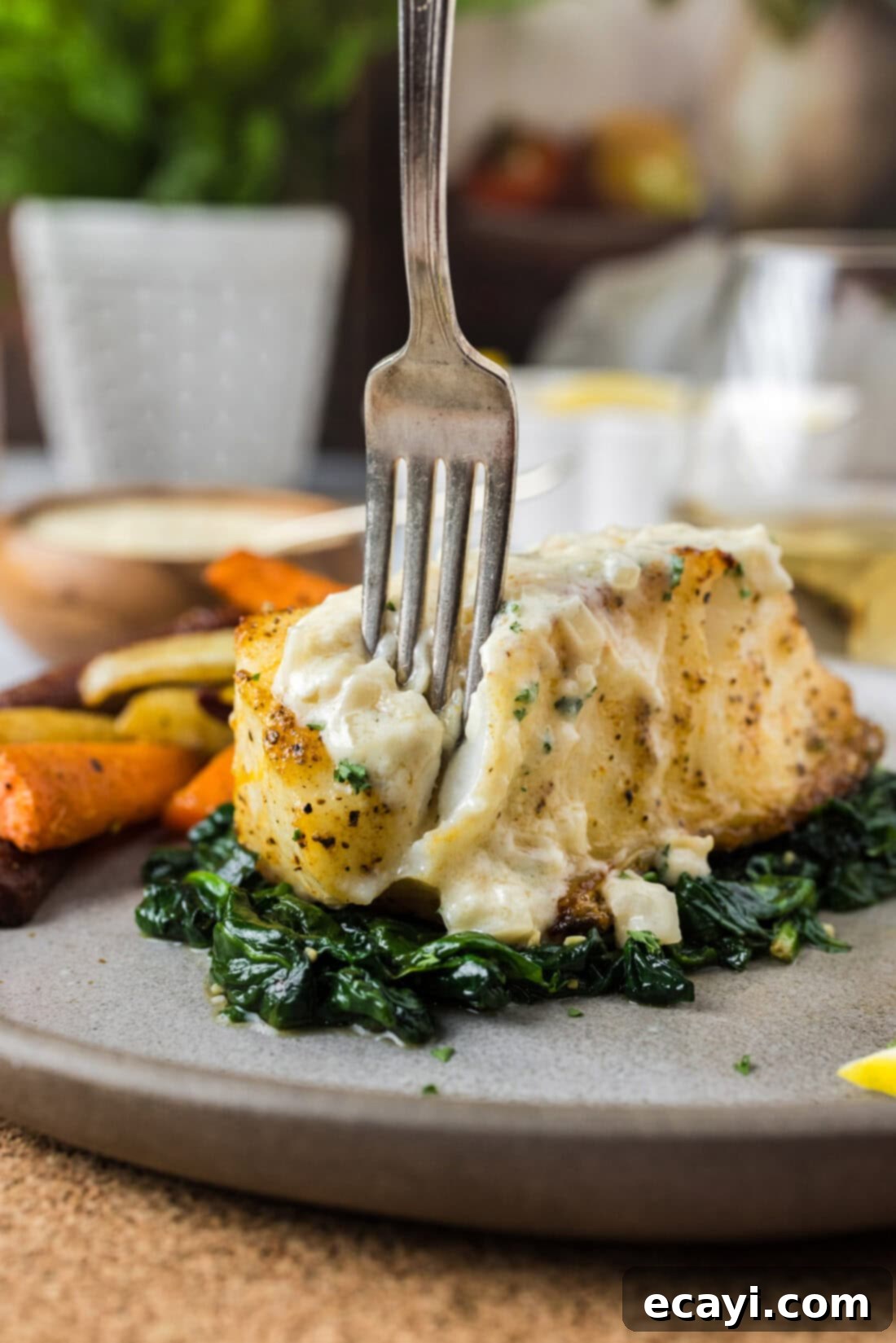
Key Ingredients for Your Baked Chilean Sea Bass and Beurre Blanc
To embark on this delightful culinary journey, you’ll need a selection of fresh, high-quality ingredients. The beauty of this recipe is that a few key components combine to create an unforgettable flavor experience. You can find all precise measurements, ingredient quantities, and detailed instructions in the printable recipe card located at the conclusion of this post.
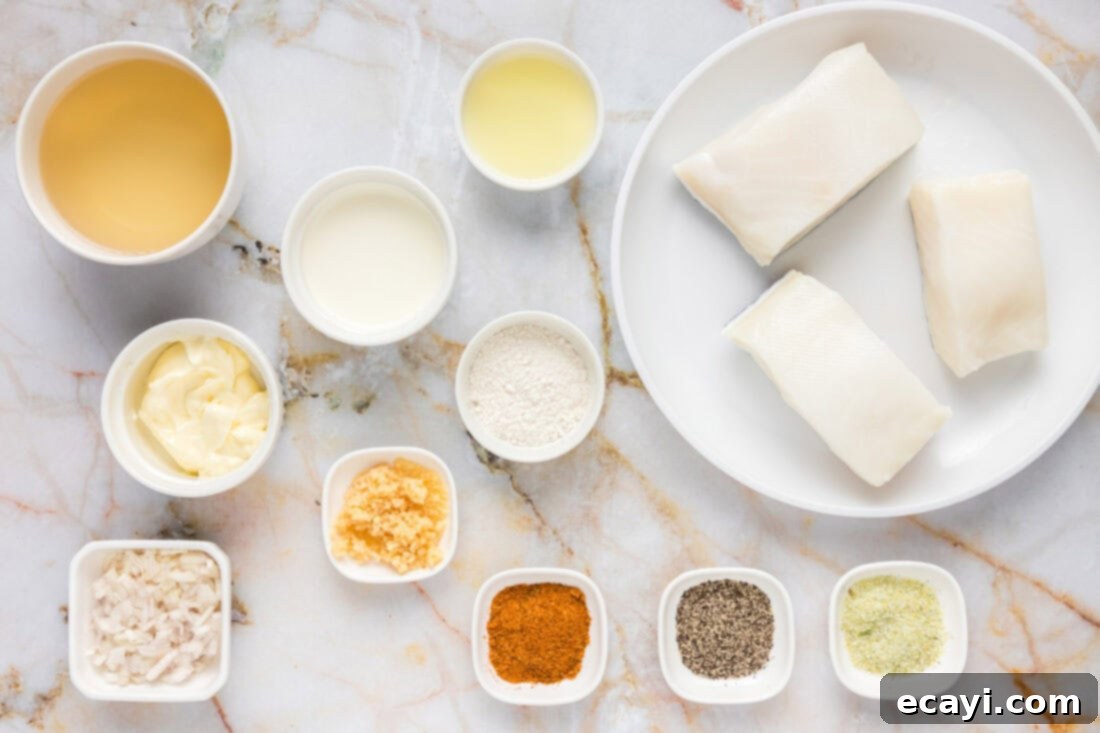
Ingredient Spotlight & Expert Substitution Tips
Understanding your ingredients is key to culinary success. Here’s a closer look at what you’ll be working with and how to make smart substitutions if needed.
FISH – Chilean Sea Bass (Patagonian Toothfish): Our preference for Chilean sea bass stems from its consistent quality and sublime texture. The recipe calls for approximately 1.25 pounds, which typically yields 3 generous fillets. However, depending on the thickness and individual size of your fish, you could easily get 4 smaller fillets. The most important tip here is to try and cut or select fillets that are roughly the same size and thickness. This ensures even cooking, meaning all your fish will be perfectly tender and flaky at the same time. When purchasing, look for firm, white flesh with no strong “fishy” odor, indicating freshness. If fresh Chilean sea bass is unavailable, high-quality frozen fillets can be used; just ensure they are fully thawed and patted dry before cooking.
SAUCE – Beurre Blanc: This classic French butter sauce is the perfect accompaniment. Traditionally, beurre blanc is prized for its ultra-smooth, emulsified consistency. In our rendition, Chef Antoine has opted to include finely minced shallots, which impart a wonderful aromatic depth and subtle sweetness that we find irresistible. If you prefer the absolute classic silky-smooth texture, you can certainly omit the shallots, or simply strain the finished sauce through a fine mesh sieve to remove any solid bits. For a non-alcoholic alternative to white wine in the sauce, a good quality chicken or vegetable broth can be used, though it will alter the classic tangy profile slightly. Fresh lemon juice is crucial for the bright, acidic counterpoint it provides to the rich butter and cream.
Step-by-Step Guide: Crafting Your Perfect Baked Chilean Sea Bass
These step-by-step photos and detailed instructions are provided to help you visualize each stage of making this delectable recipe. For a convenient printable version, complete with precise measurements and instructions, simply Jump to Recipe at the bottom of this post.
- Prepare Your Oven and Baking Sheet: Begin by preheating your oven to 400°F (200°C). This ensures the oven is at the correct temperature for even cooking. Lightly spray a baking sheet with a nonstick cooking spray to prevent the fish from sticking and make cleanup easier. You can also line it with parchment paper for even simpler handling.
- Portion the Fish: Carefully cut your Chilean sea bass into 3 equally sized fillets. Uniform portions are essential for ensuring that each piece cooks through at the same rate, resulting in perfectly tender fish without any undercooked or overcooked sections.
- Butter the Fish: Gently brush each fillet with a generous amount of well-softened unsalted butter. The butter adds moisture, richness, and helps create a beautiful golden crust while baking. Ensure an even coating for the best results.

- Season to Perfection: Season the fish generously on both sides with Old Bay seasoning, garlic salt, and freshly ground black pepper. Old Bay adds a classic seafood flavor, while garlic salt and pepper enhance the overall taste. Adjust quantities to your personal preference, but remember that Chilean sea bass is delicate, so don’t overpower it.
- Transfer to Baking Sheet: Carefully transfer the seasoned fish fillets to the prepared baking sheet, ensuring there’s a little space between each piece for proper air circulation.

- Bake Until Flaky: Bake in the preheated oven for 15-20 minutes. The exact cooking time may vary based on the thickness of your fillets. The fish is done when it’s opaque throughout and flakes easily with a fork at its thickest part. Aim for an internal temperature of 140°F (60°C) for perfect doneness.
- Prepare the Sauce Concurrently: While your fish is baking, utilize this time efficiently to prepare the exquisite beurre blanc sauce. This ensures both components are ready to be served hot and fresh.
Crafting the Perfect Beurre Blanc Sauce
This rich and tangy sauce is the perfect counterpart to the mildness of the Chilean sea bass. Follow these steps for a beautifully emulsified and flavorful beurre blanc.
- Melt Butter and Sauté Aromatics: In a skillet set over medium-high heat, melt the butter. Once melted, add the minced garlic and shallots. Sauté for just one minute until fragrant and slightly softened, but not browned. Browning can make them bitter.
- Deglaze with White Wine: Pour in the dry white wine and bring the mixture to a rolling boil. Allow it to boil and reduce slightly, concentrating the flavors and burning off the alcohol. This creates the foundational acidity for the sauce.

- Add Lemon Juice and Cream: Whisk in the fresh lemon juice, which brightens the sauce, and then incorporate the heavy whipping cream. Bring the mixture back to a boil, allowing it to heat through and slightly thicken.


- Thicken with Flour and Whisk: Gradually sprinkle in the all-purpose flour while continuously whisking. This is your thickening agent. Whisk frequently and vigorously until the sauce reaches your desired smooth and velvety consistency. Beurre blanc should be thick enough to coat the back of a spoon, but still pourable.


Frequently Asked Questions & Expert Tips for Perfect Results
Achieving culinary perfection often comes with a few common questions. Here are answers to help you master this baked Chilean sea bass and beurre blanc recipe, along with some invaluable expert tips.
For perfectly cooked Chilean sea bass, it should reach an internal temperature of 140°F (60°C). This temperature should be registered on an instant-read thermometer inserted into the thickest portion of the fish. Visually, the fish will turn opaque throughout and flake easily with a fork. It’s better to slightly undercook than overcook, as fish continues to cook slightly after being removed from the oven (carry-over cooking).
Leftover Chilean sea bass can be stored in an airtight container in the refrigerator for up to 3 days. To reheat, the key is gentle warming to preserve moisture and texture. Preheat your oven to a low 275°F (135°C). Place the fish in a foil-covered baking dish with a small splash of water or broth (a tablespoon or two) to create a steamy environment. Heat for about 10-15 minutes, or until just warmed through. Avoid microwaving, as it can dry out the fish quickly.
Absolutely! High-quality frozen Chilean sea bass fillets work wonderfully. Just ensure they are completely thawed in the refrigerator overnight before cooking. Pat them very dry with paper towels before brushing with butter and seasoning, as excess moisture can lead to steaming instead of baking and prevent a nice crust from forming.
A dry white wine is ideal for beurre blanc. Varieties like Sauvignon Blanc, Pinot Grigio, or an unoaked Chardonnay work beautifully. Avoid sweet wines, as they will alter the tangy balance of the sauce. If you prefer to cook without alcohol, you can substitute a good quality chicken or vegetable broth, though the flavor profile will be slightly different.
While beurre blanc is best made fresh and served immediately, you can prepare it up to an hour ahead. Keep it warm in a double boiler over very low heat, or in a thermos. If it separates, whisk vigorously over low heat while adding a tiny bit of hot water or broth until it re-emulsifies. For best results, plan to make it right before serving the fish.
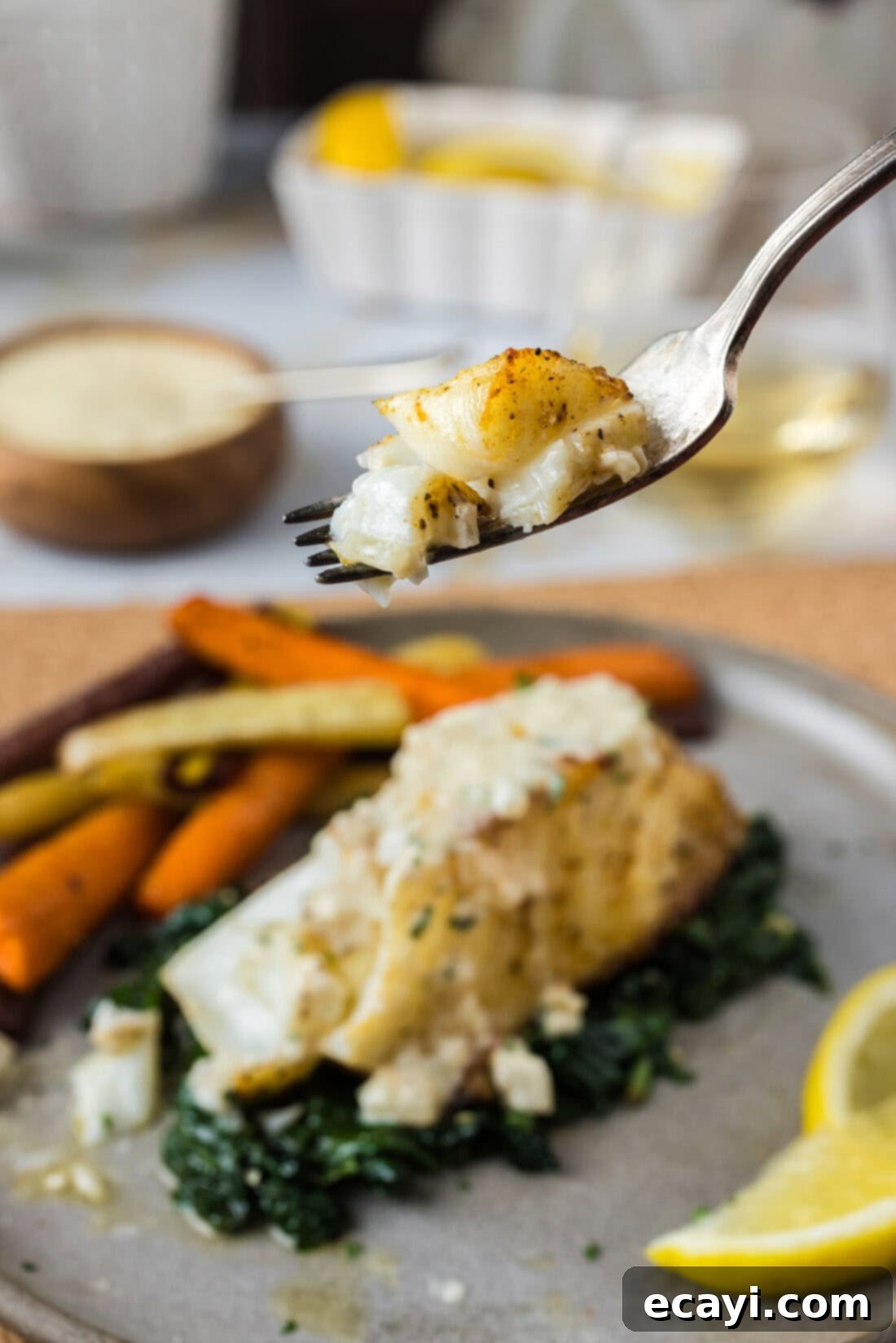
Delectable Serving Suggestions for Your Gourmet Fish Dish
The versatility of baked Chilean sea bass, especially when enhanced with beurre blanc, allows for a wide array of delicious side dishes. For a truly satisfying and well-rounded meal, consider pairing your fish with accompaniments that offer contrasting textures and flavors, or those that complement its richness.
Classic choices include creamy mashed potatoes, which provide a comforting and smooth base that perfectly soaks up the exquisite beurre blanc. For a healthier touch and a pop of color, vibrant green vegetables are excellent. Try tender roasted green beans, steamed or roasted broccoli florets, or sweet roasted carrots. These vegetables offer a lovely textural contrast and a fresh counterpoint to the rich fish and sauce.
While the beurre blanc sauce is technically optional, we wholeheartedly and highly recommend it. It’s truly what transforms a wonderful fish dish into an unforgettable culinary experience. The rich, tangy, and luxurious nature of this sauce provides a perfect balance to the mild flavor and delicate texture of the Chilean sea bass, elevating every single bite to a gourmet level. Don’t skip it if you want the full, impressive effect!
Explore More Delicious Fish Recipes
If you’ve fallen in love with cooking seafood, or are simply looking to expand your repertoire of delightful fish dishes, we have a curated selection of other fantastic recipes that are sure to please. From crispy pan-seared options to wholesome baked preparations, there’s something for every taste and occasion:
- Pan-Seared Chilean Sea Bass: For those who prefer a crispy crust and quick stovetop method.
- Crispy Fried Whiting: A beloved classic for its light and flaky texture.
- Smoked Trout: A unique and flavorful option for something a little different.
- Air Fryer Fish: Quick, healthy, and perfectly crispy every time.
- Baked Orange Roughy: Another delicate white fish that bakes beautifully.
I love to bake and cook and share my kitchen experience with all of you! Remembering to come back each day can be tough, that’s why I offer a convenient newsletter every time a new recipe posts. Simply subscribe and start receiving your free daily recipes!
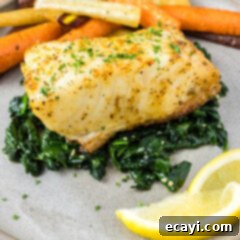
Baked Chilean Sea Bass
IMPORTANT – There are often Frequently Asked Questions within the blog post that you may find helpful. Simply scroll back up to read them!
Print It
Pin It
Rate It
Save ItSaved!
Ingredients
- 1.25 pounds Chilean sea bass
- 1 Tablespoon unsalted butter well softened
- Old Bay seasoning to taste
- garlic salt to taste
- black pepper to taste
Buerre Blanc Sauce
- 2 Tablespoons butter
- 1 Tablespoon minced garlic
- ¼ cup minced shallots
- ½ cup dry white wine
- 2 Tablespoons lemon juice
- ¼ cup heavy whipping cream
- 2 Tablespoons all purpose flour
Things You’ll Need
-
Baking sheet
-
Non stick cooking spray
-
Large heavy bottomed skillet
Before You Begin
- Chilean sea bass is our favorite fish, therefore our filets are pretty big. From 1.25 pounds you could easily get 4 filets instead of 3. Try to cut/use filets that are around the same size so that they cook evenly.
- Beurre Blanc sauce usually has a smooth consistency. Chef Antoine has added minced shallots as we love the flavor they add. You can leave them out if you prefer or simply run the sauce through a fine mesh sieve to remove any extra bits and pieces.
Instructions
-
Preheat oven to 400 F (200°C). Spray a baking sheet with nonstick cooking spray or line with parchment paper.
-
Cut fish into 3 equal filets for even cooking.
-
Brush the fish with well-softened unsalted butter.
-
Season generously to taste with Old Bay, garlic salt, and pepper.
-
Move seasoned filets to the prepared baking sheet, ensuring slight space between each.
-
Bake in preheated oven for 15-20 minutes, or until opaque and flaky (internal temperature of 140°F / 60°C).
-
While the fish is in the oven, prepare the beurre blanc sauce.
For the Buerre Blanc Sauce
-
Melt 2 Tablespoons butter in a skillet over medium-high heat.
-
Add garlic and shallots; sauté for one minute until fragrant. Add white wine and bring to a boil, reducing slightly.
-
Whisk in lemon juice and heavy whipping cream; bring back to a boil.
-
Sprinkle in flour gradually and whisk frequently until the sauce thickens to a smooth, velvety consistency.
Expert Tips & FAQs
- Chilean sea bass should reach an internal temperature of 140°F (60°C) registered on an instant-read thermometer inserted into the thickest portion of the fish. It should also be opaque throughout and flake easily with a fork.
- Leftovers can be stored in an air-tight container in the refrigerator for up to 3 days. To reheat gently, warm your oven to 275°F (135°C). Place the fish in a foil-covered baking dish with a small splash of water or broth to maintain moisture, and heat for about 10-15 minutes or until warmed through.
- Choosing Fresh Fish: Always look for Chilean sea bass with firm, moist, translucent flesh and no strong “fishy” odor. If buying frozen, ensure it’s properly thawed and patted dry before use.
- Sauce Consistency: If your beurre blanc is too thin, continue to whisk over low heat. If too thick, a teaspoon of warm water or white wine can help loosen it.
- Don’t Overcook: Fish cooks quickly, especially delicate varieties like sea bass. Overcooking will result in dry, tough fish. Use a thermometer for precision!
Nutrition Information
The recipes on this blog are tested with a conventional gas oven and gas stovetop. It’s important to note that some ovens, especially as they age, can cook and bake inconsistently. Using an inexpensive oven thermometer can assure you that your oven is truly heating to the proper temperature. If you use a toaster oven or countertop oven, please keep in mind that they may not distribute heat the same as a conventional full sized oven and you may need to adjust your cooking/baking times. In the case of recipes made with a pressure cooker, air fryer, slow cooker, or other appliance, a link to the appliances we use is listed within each respective recipe. For baking recipes where measurements are given by weight, please note that results may not be the same if cups are used instead, and we can’t guarantee success with that method.
